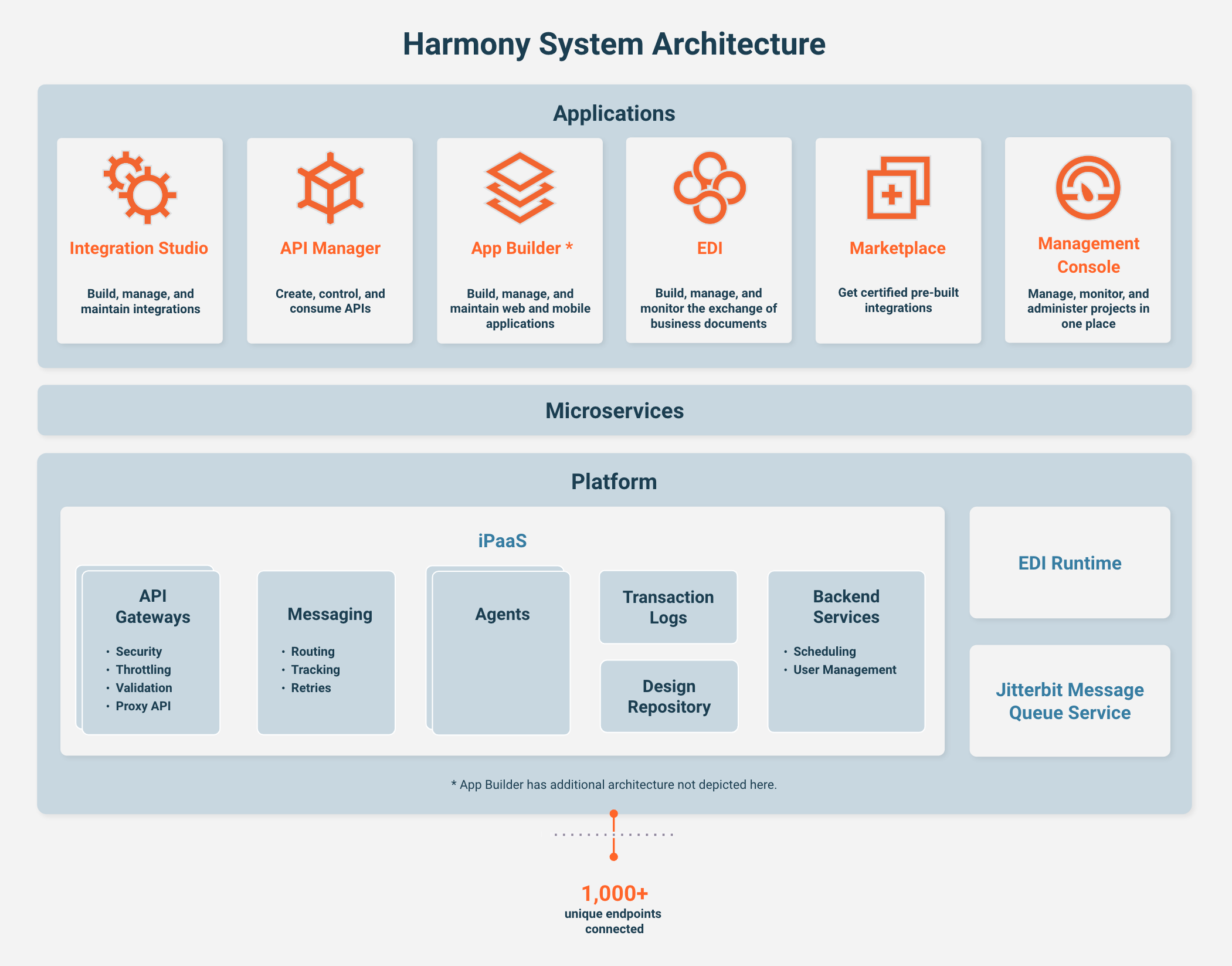Jitterbit Harmony is an integration platform that helps connect your business systems when they don't want to play nice together. It basically translates between your systems when they refuse to talk to each other - your CRM talking to your ERP, your e-commerce platform syncing with inventory, whatever disconnected mess you're dealing with.

The Four Main Parts

iPaaS Integration - This is the core piece that moves data between systems. You set up workflows to sync customer data from Salesforce to NetSuite, or push inventory updates from your ERP to your website. The platform has pre-built connectors for common stuff like Microsoft Dynamics, HubSpot, and BigCommerce, so you don't have to write custom APIs for everything.
API Manager - Handles creating and managing APIs if you need to expose your data to other systems. Includes basic security, rate limiting, and monitoring. Nothing revolutionary, but it works for standard REST API management needs.
App Builder - Low-code development for building simple business apps. Think basic forms, dashboards, and workflow apps. Won't replace your main development team but useful for quick internal tools. Similar to Microsoft PowerApps but integrated with your data flows.
EDI Module - For B2B trading partners that still require EDI transactions. Handles the EDI compliance formatting and requirements so you don't have to become an EDI expert. Supports standard X12 and EDIFACT formats.
Who Uses This Thing
Jitterbit targets mid-market companies (50-5000 employees) that need integration but can't afford MuleSoft's enterprise pricing. It's positioned as easier to use than MuleSoft but more powerful than Zapier. Common use cases include retail chains syncing inventory, manufacturers connecting ERP to e-commerce, and healthcare systems sharing patient data.
They claim business users can build integrations without developers. That's complete horseshit for anything beyond copying data from A to B. You'll still need someone technical to handle the real work, but simple data syncing is manageable for power users who've been properly trained and haven't rage-quit after seeing their first JSONPath evaluation failed at line 23 error.
AI Features (The 2025 Addition)

Jitterbit added AI capabilities in May 2025 - mostly AI assistants that help with mapping data fields and suggesting integration patterns. The "autonomous AI agents" are more like smart automation rules than actual AI agents. Features include the AskJB Assistant for platform guidance and field mapping AI for data transformations.
Don't expect the AI to replace your integration team anytime soon, but it does help with some tedious mapping tasks - think of it as a slightly smarter autocomplete, not HAL 9000.
Pricing Reality
Jitterbit uses "contact us" pricing, which means expect to negotiate. Based on what users report in reviews, you're looking at $10,000-50,000+ annually depending on the number of connections and data volume. Cheaper than MuleSoft, more expensive than Zapier, comparable to Dell Boomi.
The Gartner Visionary rating in 2025 helped their marketing, but remember that "Visionary" is consultant-speak for "good ideas, still figuring out how to make them work" compared to "Leader" status held by MuleSoft and Dell Boomi.



